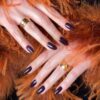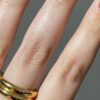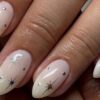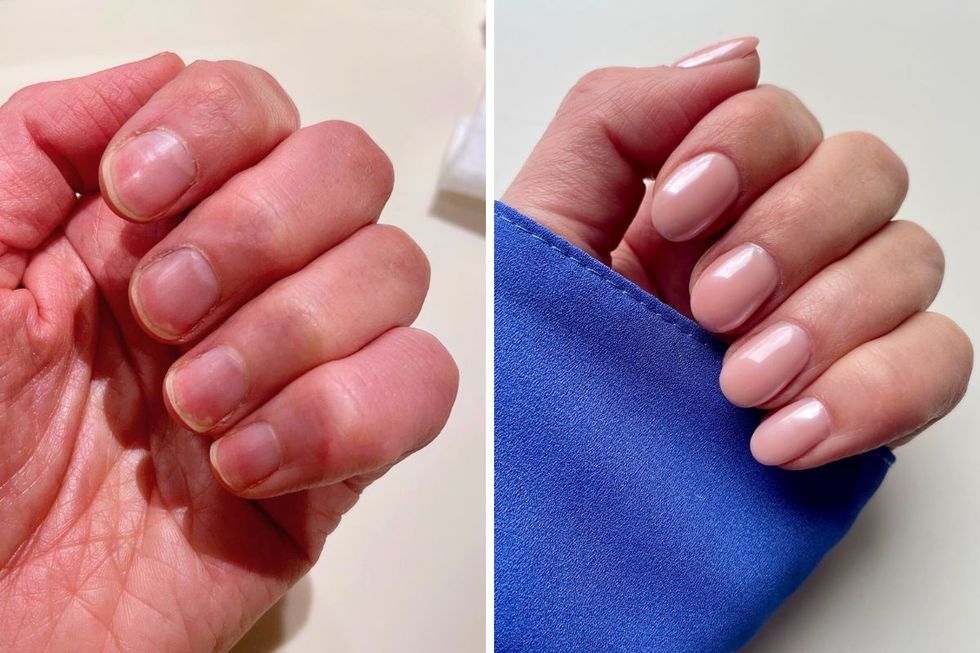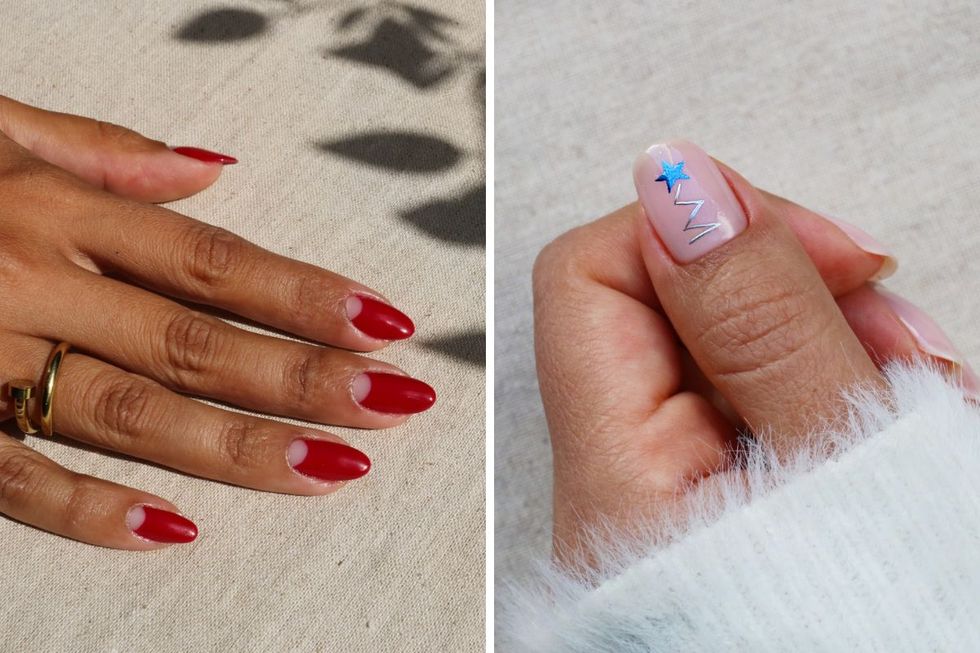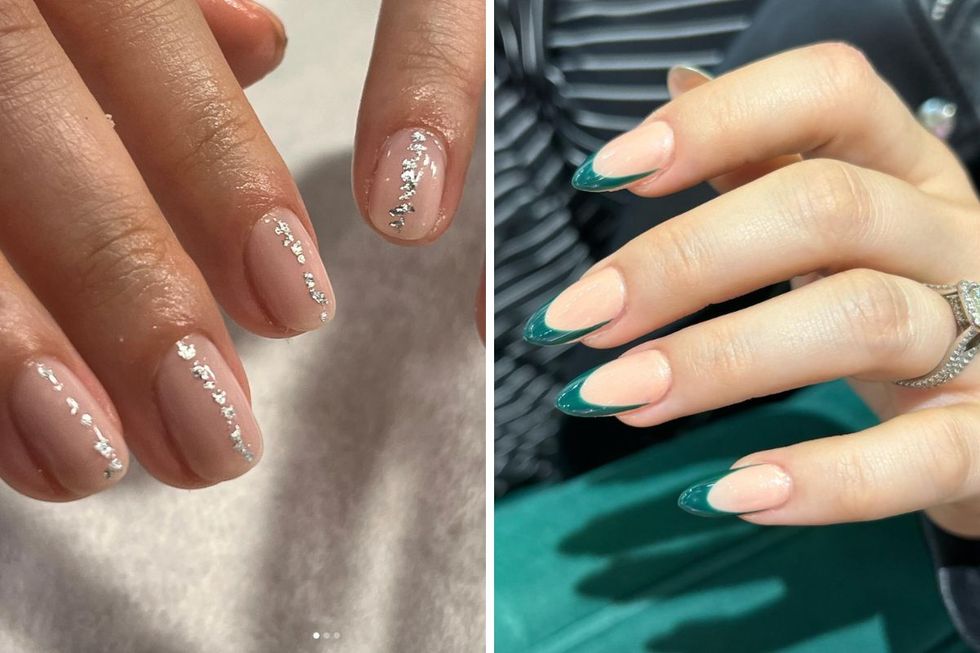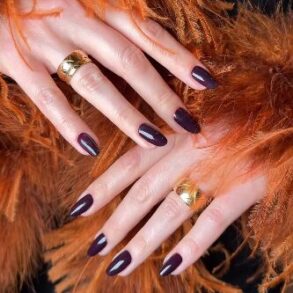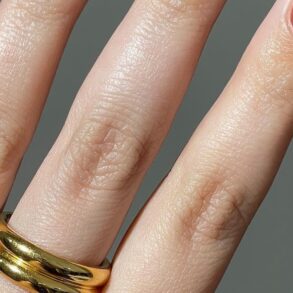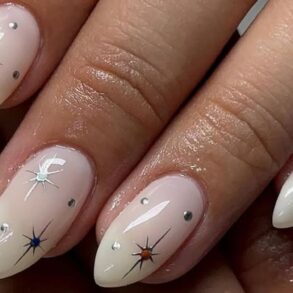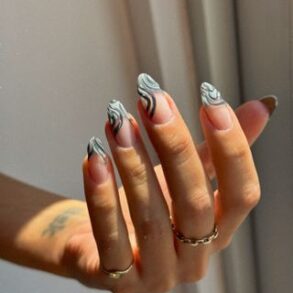A shiny, first-day salon manicure is one of life’s small joys. But a paint-on professional manicure that stays perfectly pristine one, two, even three weeks later? That’s got to make a strong case for the ‘life changing’ category, especially if you’ve spent time and money in nail bars, only to see your investment chip within one clumsy rummage for your keys.
The prang-proof manicure may sound too good to be true, yet it’s the key selling point of BIAB, aka Builder In A Bottle. A relatively new salon service designed to outlast a traditional gel manicure, BIAB also promises to take even the weakest of natural nails to glorious new lengths – no acrylic extensions needed.
It’s big talk but speaking as a beauty editor with two decades of experience, I can vouch for BIAB’s bullet-proof qualities. Over the past six months, BIAB has taken my bendy, paper-thin nails on a journey of growth in a way that no other manicure or strengthening treatment ever has.
While traditional gel manicures would usually flake within a week, fatally weakened by the flimsy canvas they were painted upon, BIAB lends my nails the resilience that nature never did. Within three weeks of my first session, I had the longest nails of my life, and they haven’t stopped growing since. To date, I’ve not had a single breakage and I only file them down when they begin impacting my typing speed. “Sorry this feature is late, my nails slowed me down,” doesn’t cut it, even in the world of beauty journalism.
So what do you need to know about BIAB, and is it worth making the switch from a traditional gel polish for yourself? Are there any downsides to consider? Here’s the lowdown on this year’s most-wanted manicure.
What are BIAB nails?
Builder In A Bottle, or BIAB, is a salon-only product which gives natural nails a tough, snap-resistant coating, also known as an overlay. It comes in a relatively small, mainly neutral but ever-expanding range of shades: “It was really important to us that we had tones to suit all skin tones,” says Giorgia Cappella, education manager at The Gel Bottle, which makes BIAB.
Although BIAB shades are mostly neutral, the overlay itself is just the starting point for the finished look. BIAB certainly isn’t the only ‘builder’ product on the market, but it’s the best known and has been used by celebrities including Kim Kardashian, Kendall Jenner and Lily Allen.
How is BIAB different to gel nails?
BIAB is a different formula to traditional gel polish, which adds a harder protective layer to your natural nail compared to gel, says Giorgia. “A BIAB nail manicure allows you to grow your natural nails far longer than you would ever achieve with a regular gel nail polish treatment. It’s revolutionary, especially if you have weak nails and have always struggled to grow them.”
How are BIAB nails applied?
If you’ve ever had a gel manicure, BIAB isn’t entirely dissimilar. The product is applied directly to the natural nail, but because it’s a thicker consistency, the technician then uses a tiny brush to shape it into a neat overlay across the nail.
Getting a smooth, thin layer is the key to a great BIAB manicure, but it does involve more skill than painting on a gel polish (and like most treatments, it’s only as good as the practitioner). Your nails are then cured, one by one, under an LED lamp.
How is BIAB used?
It’s pretty versatile. The simplest option is to wear BIAB on its own as a shiny, strong neutral nail shade. “The minimalist look is always popular,” says Juanita Huber-Millet, founder and creative director at Townhouse. “Simple BIAB colours such as blush pinks, nudes and soft pastels are a lovely way to enhance the natural beauty of the nails.”
If you prefer to slip out of neutral gear, BIAB can be used as a base layer for nail art, tips or any gel colour you might fancy as your ‘main’ colour. “It’s often used as a base layer under a normal gel polish to give your mani that extra boost of strength while keeping your favourite colour on top,” says Juanita. “It’s perfect for just before a holiday when travelling will put your nails under extra stress.”
How long does BIAB last?
“BIAB tends to last around three to four weeks depending on your nail growth – it’s likely you will see your natural nail growing out long before the BIAB itself comes off,” says Juanita.
If you pick a natural shade, the growing out line isn’t as obvious as it is with a darker polish.
Should I swap from gel nails to BIAB?
If it ain’t broke, don’t fix it. BIAB is more expensive and takes longer to do – over an hour, and from £60-plus a time – so if gel nails last well for you, it may not be worth swapping. However for somebody like me, who never even got a week’s wear from gels without chipping, BIAB is 100% worth the time and money.
What are the BIAB trends I should know about?
“This winter is all about having fun with warm, earthy tones and stylish nail art designs,” says Juanita. “One of my favourite Townhouse winter lookbook designs is Red Allure which features a berry red hue that creates an eye-catching contrast with negative space.” There’s also a super-cute festive menu at Townhouse, featuring nail art garlands and star-topped Christmas trees.
Anything sparkly or metallic is also proving popular at Paint London, where the salon’s clients are getting BIABs topped with silver chrome powders or glittery nail art. The classic French manicure is going darker for winter, too, with cream tips being swapped for rich reds or emeralds.
The cat-eye chrome trend is going strong as a BIAB topper, says Giorgia. “The shimmer you can see is actually made up of tiny little magnets within the polish so when you hold an actual magnet above the nail, it creates this really awesome velvety effect on the nail.”
Do I need to remove it every time or can I just get infills?
The jury is out on this one. “When it comes to BIAB nails, we always recommend a fresh treatment,” says Juanita. “Continuous infilling without proper removal can actually lead to nail damage.”
However, Giorgia says: “You can consistently infill BIAB as long as the natural nail health is checked regularly. Removals are only necessary if you need to change the base BIAB colour or if there is lifting from the free edge caused by dehydrated nails.”
Can BIAB harm my natural nail?
Yes, if you pick it off or if you don’t check the nail health at each appointment. Whether you have a full removal or infill, the natural nail needs to be looked at properly.
“During an infill, around 60% of the product will be removed leaving a sheer layer over the natural nail,” says Giorgia. “Any issues may be visible at that point. You would be looking for changes to the colour of the nail that could indicate a pseudomonas, where water has become trapped between lifted product and the nail.
I’ve got a HEMA allergy, can I use BIAB?
Like most gel formulas, the original BIAB uses HEMA (hydroxyethyl methacrylate) as its curing active. “It creates that hard, shiny, long-lasting surface which everyone loves,” explains Ifra Siddique, The Gel Bottle’s regulatory compliance director. “But because it’s so widely used, it can potentially be an allergen. So like many brands, BIAB has now introduced a HEMA-free alternative.”
It comes in six shades, matched as closely as possible to BIAB’s most popular colours, and lasts nearly as well. “With normal BIAB we say you get 3-4 weeks wear,” says Ifra. “With HEMA-free, we’ve 100% of user trials getting three weeks wear. So it’s as close as it can be, but there’s no need to switch unless you’ve had an issue with HEMA.”
Why do my nails feel hot during a BIAB treatment?
It’s common to feel heat spikes as the BIAB gel ‘cures’ under the UV lamp and gets hot due to the chemical process of polymerisation. “When using thicker consistency products such as builder gels, the more product used, the more likely you are to feel a heat spike as the UV tries to work double to kickstart the polymerisation [curing] process,” says Giorgia. “The best way to minimise heat spikes is to follow the exact application method each brand outlines in their application guides.”
However, this doesn’t always solve the problem. “Heat spikes are common for those with thinner nail beds, and even when products are used correctly and cured correctly may still be felt,” says Giorgia. “The best thing to do is to remove the hands immediately if any pain is felt until it has passed and start the curing process again.”
Ifra advises: “If you do naturally suffer from a heat spike, I’d always recommend having your nails done on a lower heat mode setting because that will lower the intensity of the lamp and allow the chemical reaction to happen more slowly, over a longer period of time.”
This post was originally published on this site be sure to check out more of their content.

